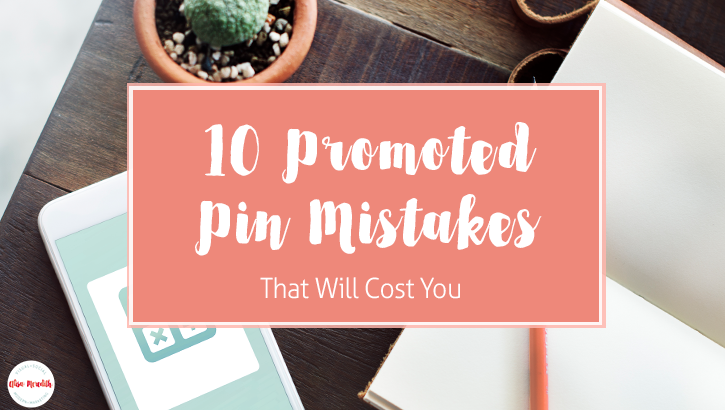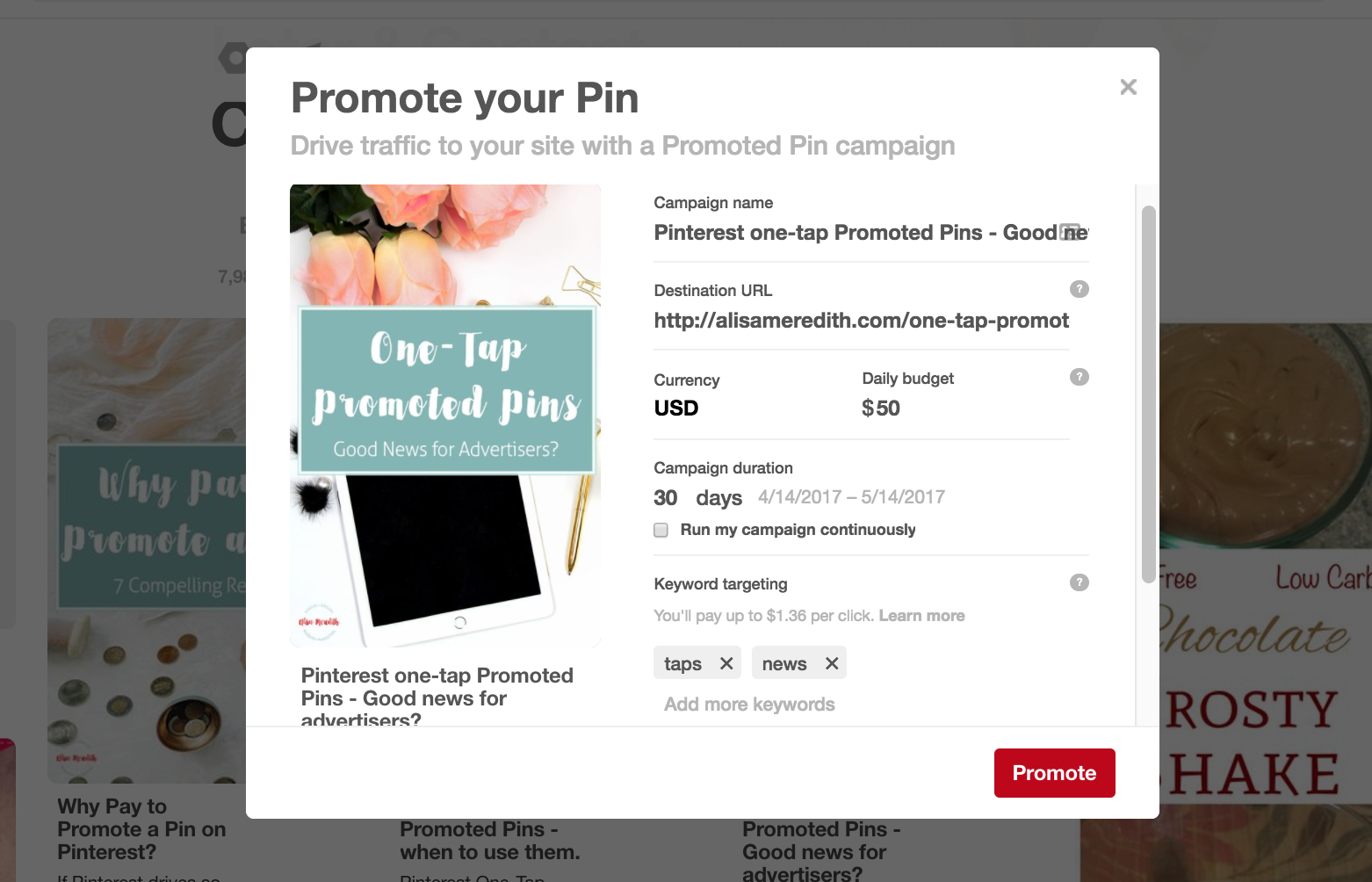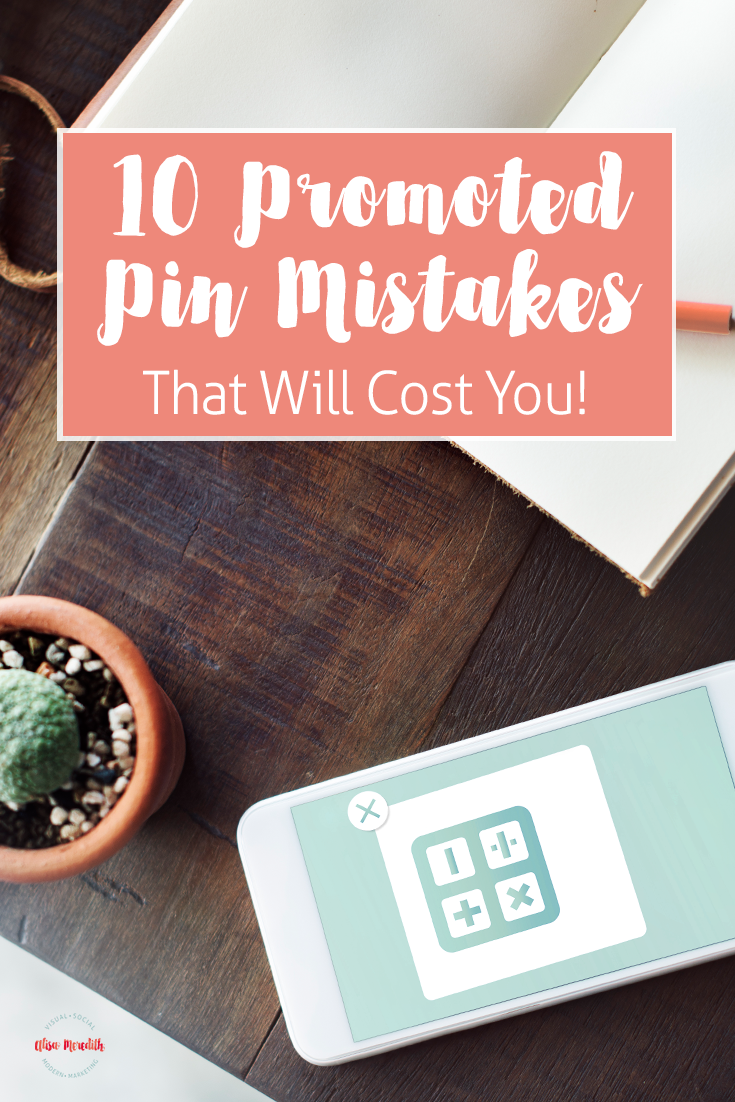 I hate to see people overspend for anything, so I’ve put together some of the ways you might be wasting money on a Pinterest Promoted Pin campaign. It’s so easy to do!
I hate to see people overspend for anything, so I’ve put together some of the ways you might be wasting money on a Pinterest Promoted Pin campaign. It’s so easy to do!
1. You’re Using the Wrong Promoted Pin Campaign Type
A good place to start because it’s the easiest to fix! Despite the fact that the 4 campaign types available to all of us seem to be named according to your marketing goal:
- Awareness
- Engagement
- Traffic
- App Install
The only one I’ve found cost effective is the Traffic campaign. That’s right – even if all you really want is brand awareness, or you’re hoping for long-term traffic from a lot of repins, your best bet is a Traffic campaign. Read more about my findings here. The exception is App Install campaigns. I’ve not had opportunity to use those yet, and I can see the use for them for sure.
2. You’re Not Using UTM Codes and Google Analytics
Pinterest has a funny way of tracking conversions, so if you want to know how many signups and sales are directly attributable to Pinterest Promoted Pins, you’ll need to use tracking codes and goals. And you do need to know how your Promoted Pins are impacting leads and sales! Results you can’t track don’t count. OK, that might be a little too pragmatic, but you know what I mean!
3. You’re Not Tweaking Your Promoted Pin Campaigns
While you should let your campaigns alone for a week or so to get a true picture of what’s working (I know, it’s hard), once they’re established, you should be reviewing for click-through rate and spend AND how the targeting you’ve set up is impacting each. Look at how keywords, audiences, device usage, etc. are impacting cost. If something is costing too much, remove it! Oh, and a “good” click-through rate is .2-.3%. Any lower, and just like with low relevance scores on Facebook, you’ll be paying more to have you pin served up.
On the other hand, if a keyword or two is super inexpensive (look at your effective cost per click, too), consider taking it out of the ad group and creating a new one with a big more money behind it. Take advantage of bargains!
4. Your Budget is Spread Too Thin
This may or may not have happened in conversations with a client. 🙂
Business Owner: “Let’s promote five items this month.”
Me: “Great! What’s your ad budget?”
Business Owner: “One hundred dollars.”
Me: “Per item?”
Business Owner: “No, for all of them. I just want to see if it works.”
You know, I’m all for testing things out and dipping a toe in before risking the farm (too many metaphors?), but when you give Pinterest $.20/day here and $.45/day there, it will take a verrry long time before you’ll know if ANYTHING is working. By then you will have spent a good deal of money and wasted a whole lot of time.
Better to promote one item or one piece of content, with a couple of different targeting plans and a few images than to throw little teeny darts at the wall. If that doesn’t work, try something else. Now if you have more budget, try more things and the adjust to put more money behind what’s working (see above).
5. Your Image is an Afterthought
Lifestyle images convert at 170% the rate of product images. So, yes, I know they’re expensive. I know it takes time. But, it’s worth it if you’re serious about making Promoted Pins work.
You’ll want to make sure the image you promote follows good practices for all successful pins:
- It’s tall (2:3 ratio).
- It uses warm colors.
- It excludes human faces.
- It uses effective text overlays – especially important now when Pinterest is experimenting with removing visible descriptions from the feed.
Sometimes the most successful pins break one – or all, of the rules. So, if you have one of those, promote it! Otherwise, go with what’s known to work.
But there are a few more things to keep in mind when promoting a pin:
- Use subtle branding.
- Include a powerful call to action.
Since you’re paying for clicks, you want to prime the pinner to take action once they get to your site. The branding lets them know where they’re going, and the CTA tells them what they should do when they get there.
6. You’re Not Using Audiences
The ability to use visitor, customer, and engagement audiences has been a game changer for me and my clients. Not surprisingly since we’re talking to people who already know you, the click-through rates go through the roof and ultimate conversions to leads and sales do, too – even as cost stays steady or decreases. They’re really simple to set up, too.
I always start with my customer’s audiences. Then, if they’re too small to get the results we want, I move on to actalike audiences, starting with a 1% similarity. If that’s still not enough, we can keep branching out with a bigger actalike, or try interest or keyword targeting.
7. You Don’t Have a Pinterest Promoted Pin Plan
Before I hit the “create campaign” button, I know exactly what I’m going to do. I have my links, my pins, my targeting, my audiences – even budgets and bids, all written out. This is partly because I like to share that with my customers before I start spending their money 🙂 but also because if you get in there and just start shooting from the hip, you’re going to forget something. The technical bit on the Promoted Pin platform should take about 5% of all your time. The rest goes to figuring out what to promote and allll the other supporting strategy.
Want to see how I do it? It looks a little something like this Promoted Pin Planner you can download for free. I guarantee you it will take away some of the overwhelm that will otherwise hit you when you get in there. Don’t be a Panicky Pin Promoter. 🙂
8. You’re Using the “Promote” Button
Perhaps you have seen it? 
Just like the “Boost” button on Facebook, “Promote” on Pinterest beckons with its siren song of super-easy content promotion. Not so fast!! Your options for targeting are incredibly limited on Pinterest (as they are on Facebook). In fact, all you have for options are keywords! PS – the default daily budget seems to have dropped from $100/day last time I looked. But please, if you have $100, $50, or even $10 a day, there are MUCH better ways to spend your money than by using the easy button!

9. You’re Using One-Tap and You Don’t Know It
If your account has been “upgraded” to include the option of using one-tap Promoted Pins, you should have received an email – because all your active traffic campaigns will have that option switched on automatically! There are times when one tap can be extremely effective – when you’re promoting to a very warm audience, for example. However, when used indiscriminately, it can decrease results and increase your overall spend instantly.
10. You’re Not Working with a Pro
OK, OK, so I’m probably a little biased here, but I do believe that if something (Pinterest advertising, for example), is worth paying for, it’s worth either learning how to do it well, or to hire a professional to help. At least for the parts where you feel a bit confused. It could be you only need help with one of the many steps that go in to planning a Promoted Pin campaign – and that could make a HUGE difference in your results. For example:
- Figuring out what to promote
- Creating on-site assets including blog posts or landing pages
- Setting up a follow-up plan for new leads
- Optimizing for conversions
- Creating compelling images
- Writing descriptions
- Setting up Google analytics goals
- Figuring out Google UTM URLs
- Creating audiences
- Deciding on targeting
- Keeping track of everything in an organized way
- Knowing how to analyze and tweak for best results
I can help with any or all of that! So, why not get the planner and give it a go? I’m here if you get stuck. Let me know how it goes!
Helpful? Please Pin me!

Related Posts
Latest posts by Alisa Meredith (see all)
- How Much Do Pinterest Ads Cost? - December 10, 2021
- Surround Sound Marketing – The Content Strategy of the Future - November 29, 2021
- How to Build Your Business with Word-of-Mouth Marketing - November 18, 2021





